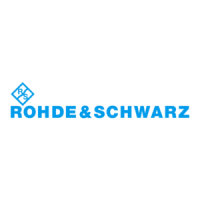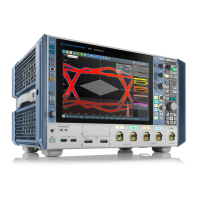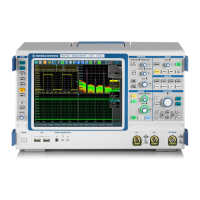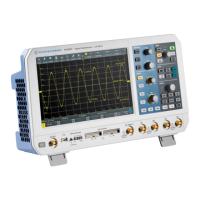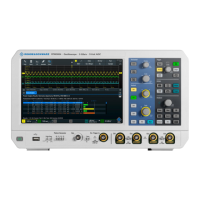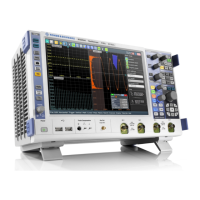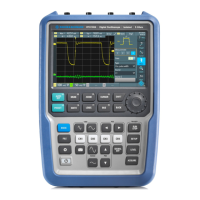Protocol analysis
R&S
®
RTE
623User Manual 1326.1032.02 ─ 20
"Identifier
+data"
Triggers on the decoded frame content, on header and payload data:
●
Indicator bits, see "Indicator bits" on page 623
●
Frame identifier, see "Frame ID (min/max)" on page 623
●
Payload length, see "Payload length (min/max)" on page 624
●
Cycle count, see "Cycle count (min, max), Step" on page 624
●
Data position, see "Position, Index (min, max) - Data setup"
on page 625
●
Data bit pattern, see "Condition, Data (min, max) - Data setup"
on page 625
"Symbol"
Triggers on a symbol or wakeup pattern, see "Symbol" on page 626.
"Error condi-
tion"
Triggers on one or more errors that are detected in the decoded data,
see "Error conditions" on page 626.
Remote command:
TRIGger<m>:FLXRay:TYPE on page 1563
Indicator bits
Triggers on one or more indicator bits at the beginning of the header segment. Each bit
can be set to 0, 1, or X (do not care).
Trigger type: "Identifier + data"
Payload
Trailer
Cycle
count
Header
CRC
Pay-
load
length
Frame ID
Reserved bit
Payload preamble
Null frame
Synch frame
Startup frame
Indicators
5 bits
"Payload pre-
amble"
Indicates a Network Management Vector in the payload segment.
The NMV allows the host processor to send data directly, without pro-
cessing by the communication controller.
"Null frame"
Indicates a frame without usable data.
"Sync frame"
Indicates that the frame is used for synchronization of the FlexRay
system. Only sync nodes can send this frame type.
"Startup frame"
Indicates a startup frame used for startup of the network. Only spe-
cific start nodes can send this frame type.
Remote command:
TRIGger<m>:FLXRay:PLPReamble on page 1564
TRIGger<m>:FLXRay:NUFRame on page 1565
TRIGger<m>:FLXRay:SYFRame on page 1565
TRIGger<m>:FLXRay:STFRame on page 1565
Frame ID (min/max)
The frame ID contains the number of the slot in which the frame is transmitted. Each
frame ID occurs only once during a FlexRay cycle.
FlexRay (option R&S
RTE-K4)
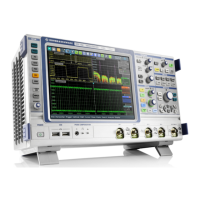
